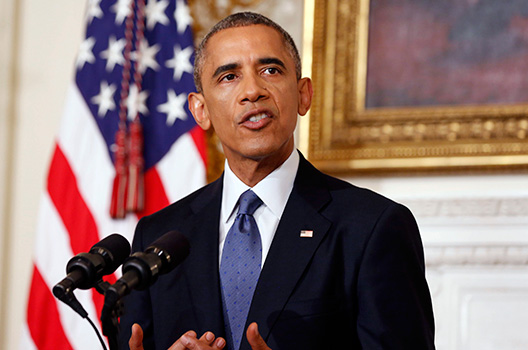 Although President Obama cited humanitarian concerns for the fate of the endangered Yezidi minority, these air strikes were more likely precipitated by ISIS’s recent significant military gains in Northern Iraq. Kurdish forces, whom the US had expected to hold their ground against and indeed roll back ISIS, have struggled and ceded significant territory. There is now a threat to the critical, Kurdish city of Erbil. Reports that ISIS now controls the Mosul Dam – Iraq’s largest, and a critical strategic asset –have raised US concerns over the group’s gains and entrenchment.
Although President Obama cited humanitarian concerns for the fate of the endangered Yezidi minority, these air strikes were more likely precipitated by ISIS’s recent significant military gains in Northern Iraq. Kurdish forces, whom the US had expected to hold their ground against and indeed roll back ISIS, have struggled and ceded significant territory. There is now a threat to the critical, Kurdish city of Erbil. Reports that ISIS now controls the Mosul Dam – Iraq’s largest, and a critical strategic asset –have raised US concerns over the group’s gains and entrenchment.
These air strikes do not appear embedded in a broader US strategy to defeat ISIS in either Iraq or Syria – though to be sure, US strategy remains vague and undefined. ISIS will not make a costly, futile stand to resist total US air superiority, and their substantial territorial gains in recent months and resources offer them plenty of room to retreat and adapt to new realities. Unless the group is targeted in Raqqa, Deir al-Zour, Ninawa, and all its core geographies, it will adapt and continue to pose a serious threat to Iraq’s central government, Kurdish forces, and rival Syrian rebel groups.
Worryingly, the US attack is fueling perceptions among Sunnis that — as their co-religionists have been left to an even worse fate in Syria (on a much larger scale) than Iraq’s Yezidis, including siege, constant bombing, and chemical weapons attacks amid US inaction there — a threat to a non-Muslim minority was enough to spur the United States to act. The unavoidable impression is that the United States cares for non-Muslim minorities, but can tolerate the deaths of tens of thousands of Sunni Muslims at the hands of both ISIS and the Syrian regime (and, to some, the Iraqi regime as well).
There is, of course, a distinct possibility of unintended escalation of a US-ISIS conflict, or the United States’ using this campaign as a launch point for a much broader military effort to weaken ISIS. However, there is no indication yet that this is the case.
The next few days will help clarify if there is indeed a broader US strategy behind these initial air strikes.
For more on the Iraq air strikes, read Fred Hof’s Airstrikes in Iraq, But Why Not Syria
